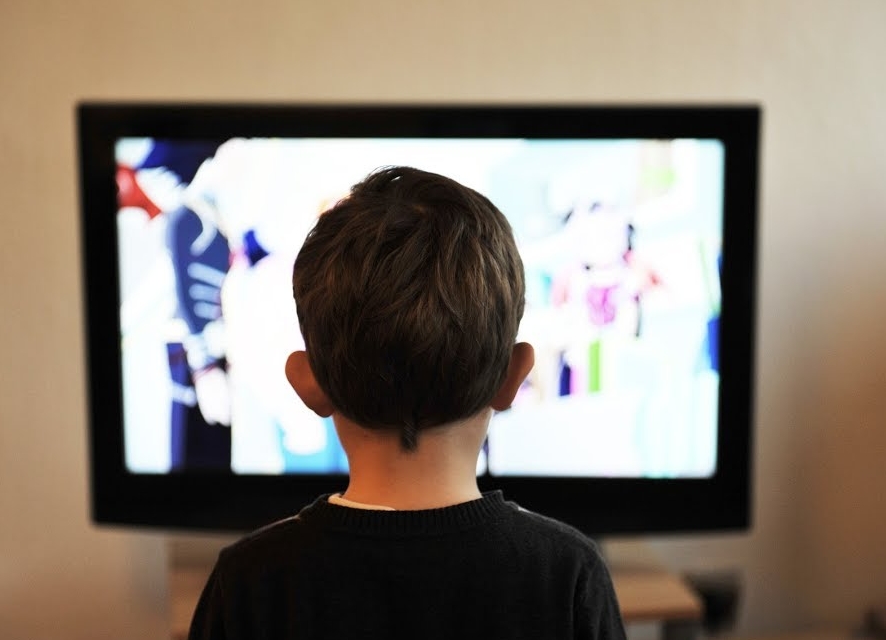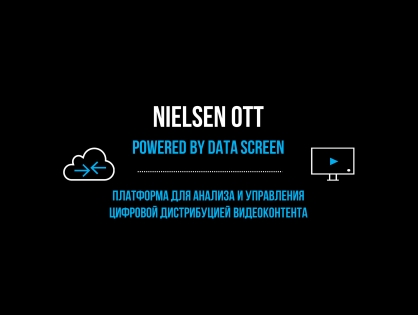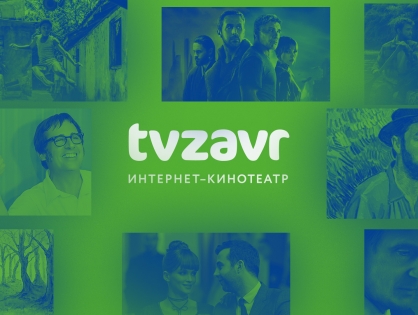 Institute of modern media (MOMRI) published the report “Children. Media – consumption. 2017” dedicated to media behavior of Russian children. We got acquainted with results of the study together with Vladimir Lapin, senior Manager of PwC, leader in the area of consulting services to companies in the industry of media and entertainment, and Irina Grandel, head of business development, partnerships and paid models of online cinema ivi.
Institute of modern media (MOMRI) published the report “Children. Media – consumption. 2017” dedicated to media behavior of Russian children. We got acquainted with results of the study together with Vladimir Lapin, senior Manager of PwC, leader in the area of consulting services to companies in the industry of media and entertainment, and Irina Grandel, head of business development, partnerships and paid models of online cinema ivi.
The report integrates data on all areas of media activity of children from birth to 12 years: television, mobile games and applications, music, radio, Internet, reading, cinemas, VR, comprehensively describing portrait of a modern child as a media consumer.
The report is based on 25 studies, which involved more than 3 thousand children and 7 thousand parents. This research program was commissioned by JSC “Digital television”, as well as by initiative of the Institute of modern media (MOMRI). The report is also based on industry statistics, analytical data and expert opinions.
“The current generation of 0-5 years old children is growing in qualitatively different media environment – their childhood comes on the heyday of Russian animation. They have qualitatively different media habits and preferences, and these habits are not only actively changing, but also lay the foundations for systemic changes in media industry and future consumer behavior.” Kirill Tanaev, Director of the Institute of modern media (MOMRI)
The report provides extensive and up-to-date information on trends in media consumption of children under 12 in Russia. For the first time portraits of children of different age groups, built on the basis of indicators and characteristics of their development of media space, are described. Qualitative assessment of risks and potential of using mobile games for children’s development was made. Analysis
of the parental position in relation to media behavior and media preferences of children was made, as well as recommendations for the safe development and use of gadgets, mobile games and applications by children. A separate section is devoted to the study of consumer activity of children, as well as the attitude of children and parents to licensed goods. 2017 clearly demonstrated the systemic changes in media industry under the influence of the children’s segment. Modern children are the most numerous (22.6 million) and the most media part of society, significantly ahead of teenagers and young people by media consumption. Children were born and grow up in households where there are many gadgets – two TVs, Internet access, tablet, smartphone, computer or laptop, DVD, game console, etc. Contrary to stereotypes, children are consumers of different types of content: TV (72%), printed (77%), gaming (71%), music (42%), etc.
 Parents, regardless of income level, provide children with access to modern media: more than half of children from birth to 12 years have the opportunity to use their parents ‘ smartphone or tablet (59%) every day. Own digital devices, including mobile devices, appear in children`s hands as never before: at the age of 3 years, every 10th child is the owner of his own gadget. Buying a tablet or smartphone for a child in preschool age is perceived by parents as natural (children aged 4-7 years – 24% and 16% respectively have tablet or smartphone in Russia). By the age of 10, 9 out of 10 children have their own tablet or phone or both at once. According to research of MOMRI 2017, watching TV and reading (alone or with parents) – are the most popular types of media activity with children up to 12 years in Russia. Half of the children have their own TV or one that they watch at will (45%). Every fifth kid has his own package of TV channels (19%).
Parents, regardless of income level, provide children with access to modern media: more than half of children from birth to 12 years have the opportunity to use their parents ‘ smartphone or tablet (59%) every day. Own digital devices, including mobile devices, appear in children`s hands as never before: at the age of 3 years, every 10th child is the owner of his own gadget. Buying a tablet or smartphone for a child in preschool age is perceived by parents as natural (children aged 4-7 years – 24% and 16% respectively have tablet or smartphone in Russia). By the age of 10, 9 out of 10 children have their own tablet or phone or both at once. According to research of MOMRI 2017, watching TV and reading (alone or with parents) – are the most popular types of media activity with children up to 12 years in Russia. Half of the children have their own TV or one that they watch at will (45%). Every fifth kid has his own package of TV channels (19%).
 In 2017, TV is the main digital device of preschool children. The main gadget of a teenager is smartphone. Media abundance, a significant increase in volume of high-quality Russian children’s content – is the catalysts for the growth of children’s media consumption in Russia. Time of watching and total share of children’s TV channels (16.6%, +4.2% by 2014, 4-17 years) is also increasing. Children’s segment of book market (21%, +12% by 2016) is growing rapidly, the share of children’s domestic release fees from general children’s release fees in Russia (25.8%, +14.1% by 2016) and the volume of downloads of children’s and family mobile games (240 million, +22% by 2016) are increasing.
In 2017, TV is the main digital device of preschool children. The main gadget of a teenager is smartphone. Media abundance, a significant increase in volume of high-quality Russian children’s content – is the catalysts for the growth of children’s media consumption in Russia. Time of watching and total share of children’s TV channels (16.6%, +4.2% by 2014, 4-17 years) is also increasing. Children’s segment of book market (21%, +12% by 2016) is growing rapidly, the share of children’s domestic release fees from general children’s release fees in Russia (25.8%, +14.1% by 2016) and the volume of downloads of children’s and family mobile games (240 million, +22% by 2016) are increasing.
 Multi-screen and digitalization are new signs of child media consumption. Mass daily viewing of video content by children on Youtube (48% in 0-12 years) became a new phenomenon, the use of messengers (35% in 8-12 years), communication of children from 8-10 years in social networks (36% in 8-12 years). Mobile games on tablet or phone have become daily activity for every second child from birth to 12 years (45%).
Multi-screen and digitalization are new signs of child media consumption. Mass daily viewing of video content by children on Youtube (48% in 0-12 years) became a new phenomenon, the use of messengers (35% in 8-12 years), communication of children from 8-10 years in social networks (36% in 8-12 years). Mobile games on tablet or phone have become daily activity for every second child from birth to 12 years (45%).
Vladimir Lapin, senior Manager of PwC, leader in the field of consulting services to companies in industry of media and entertainment:

Children’s segment (in wide sense) is certainly interesting to any media holding: many habits, love for some animated characters, etc. – all this is laid in the subconscious from childhood and even in adolescence or in adulthood can encourage person to buy goods with these characters. In addition, any self-respecting parent will rather save on themselves than on the child. Though high-quality popular children’s content, in fact, is advertising to all products that will then be released with images of characters. And there also will be no problems with the frequency of such «advertising» – children often review the same thing.
However, there are difficulties: for example, quick process of growing up, making the content and characters less relevant and narrowing the potential audience for creators of animation, and the need to be “safe” for children from the point of view of parents, as well as restrictions on possible partnerships with brands and advertising. These difficulties, combined with high cost and complexity of producing animated content, often lead to the fact that few media companies want to comprehensively engage in the creation of animated content. And therefore, become hostages of one-two successful “lines”.
With a new study of MOMRI VGTRK and CTV once again show that they understand why they go into this segment and how they are going to win the trust of parents and love of children. Vertical integration from own production to own licensing Agency and retail, distribution from cinema to Internet, and, most importantly, love of high-quality children’s content from key top managers of companies. It is clear that” umbrella”, which the company is building around the TV channel “MULT” is still developing, but complexity of the approach and success – visible to an eye.
If we talk from the position of potential parent, then, of course, it is cool, if you can give your child smartphone with content and do your own thing, but it is important to understand that the child should learn to live in real world, too – it is important not to overdo it with the time of viewing. Therefore, I think it is very important to make a connection between “broadcast” (whatever it is – TV, Internet, linear or OTT) and “offline”, so that the child was interested with favorite characters not only to drive fingers across the screen and press joystick buttons. For example, Nintendo now has a funny idea.
In addition, it always seemed to me that the presence of smartphones and toys in families (with proper instruction and encouragement) can easily turn a child into Creator of new content (stop motion animation) and stories – with favorite Lego or plush characters. And this, in the future, could help the media segment already with staff, which is so lacking now.
Irina Grandel, Director of business development, partnerships and paid model in online cinema ivi:

Children’s audience occupies large share of the ivi service audience. And this is the most devoted audience, which spends a lot of time on our service for repeated review of favorite cartoons and movies for children. Moreover, a significant part of this audience uses our subscription service.
On the basis of data on the platforms, the leader in children’s viewing of content – is Smart TV. As a rule, children under 3 years old watch this content with their parents. And then users are divided into two categories, behavior of which depends primarily on family values. One category adheres to family viewing, the second – gives children tablets and smartphones or leaves one-on-one with other screens, allowing watching safe tested content. Why are we talking about security? The Internet does not guarantee isolation from unfavorable content, even checked sites of TV channels have a gap in the form of the possibility of clicking on other external links. That is why ivi has specialized children’s applications based solely on children’s content and completely isolated from content unwanted for child’s eye. The ivi deti apps do not even contain any links to the main ivi website, so child, left alone with app, will not stumble accidentally on movies or adult advertisements.
By the way, about advertising. Significant part of our children’s audience now uses vi service by subscription – parents prefer to keep their children from viewing any ads.
Also over the past two years we have seen an active growth of children’s audience on smartphones and associate it with general trend of recent years in the mobile industry — large smartphones. Now no one will be surprised by smartphone with screens of 5, 6 or 7 inches, and this is enough for comfortable video viewing. Therefore, parents stopped buying tablets especially for children, and “treat” them with their smartphones. For us, this is an occasion to think about how to make our service interesting for both children and adults, as they all now use the same devices.





Отправить ответ